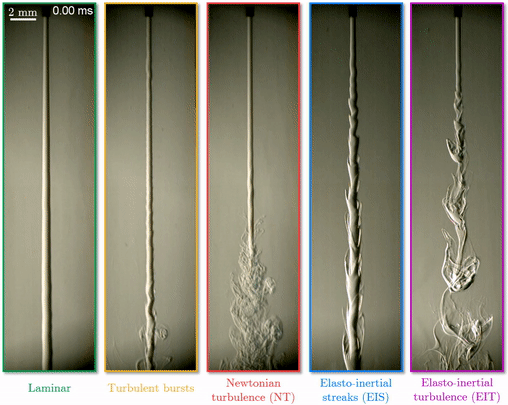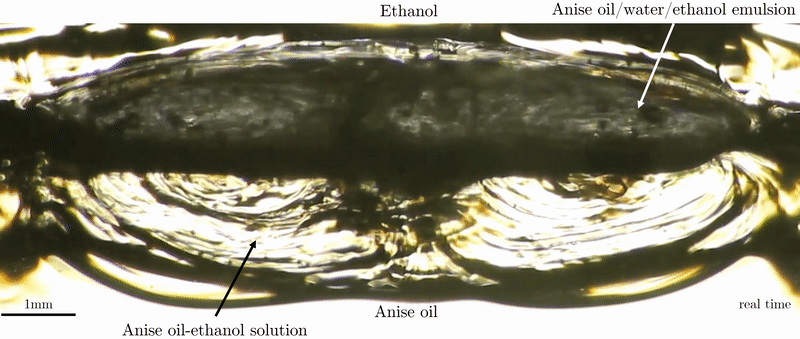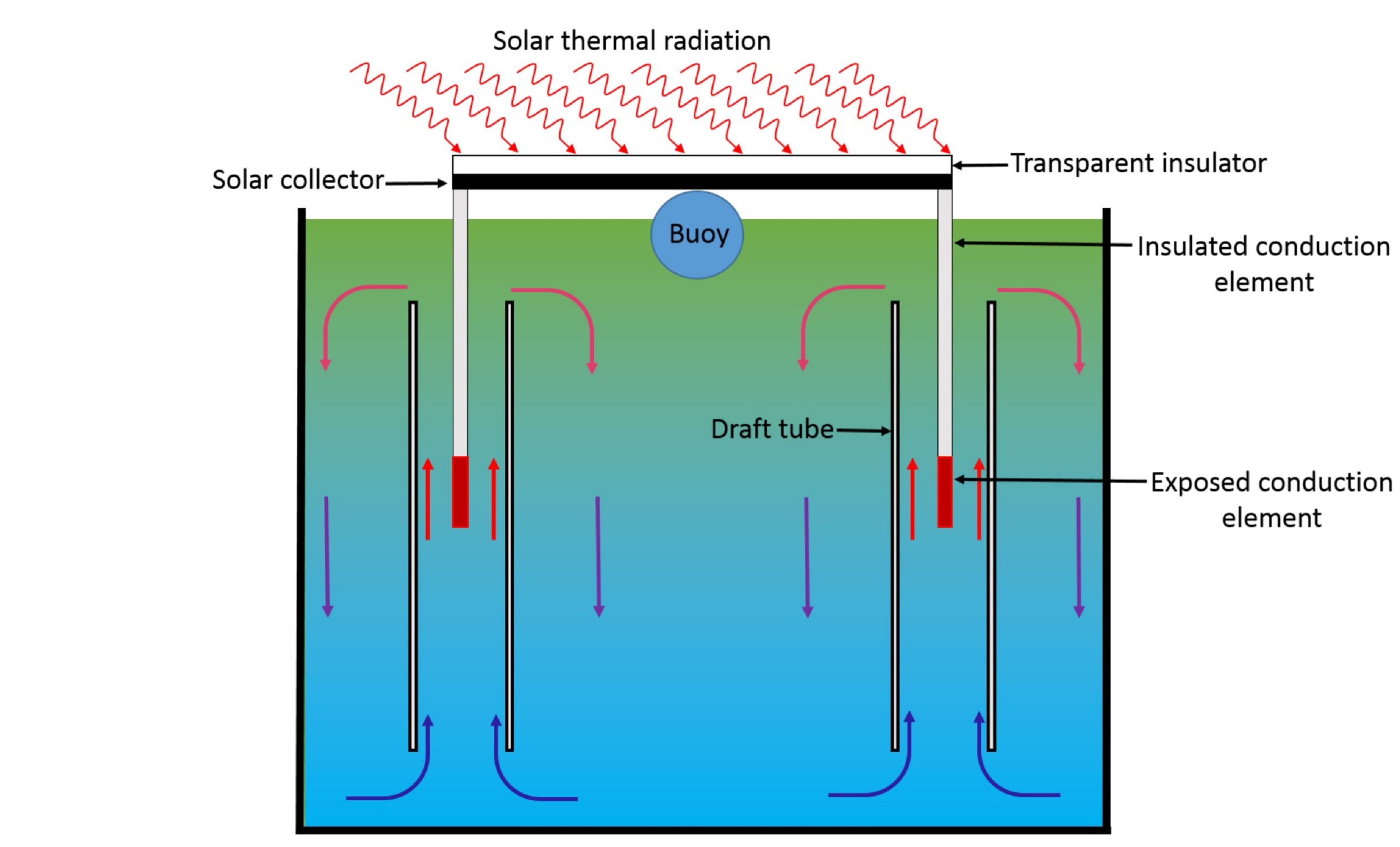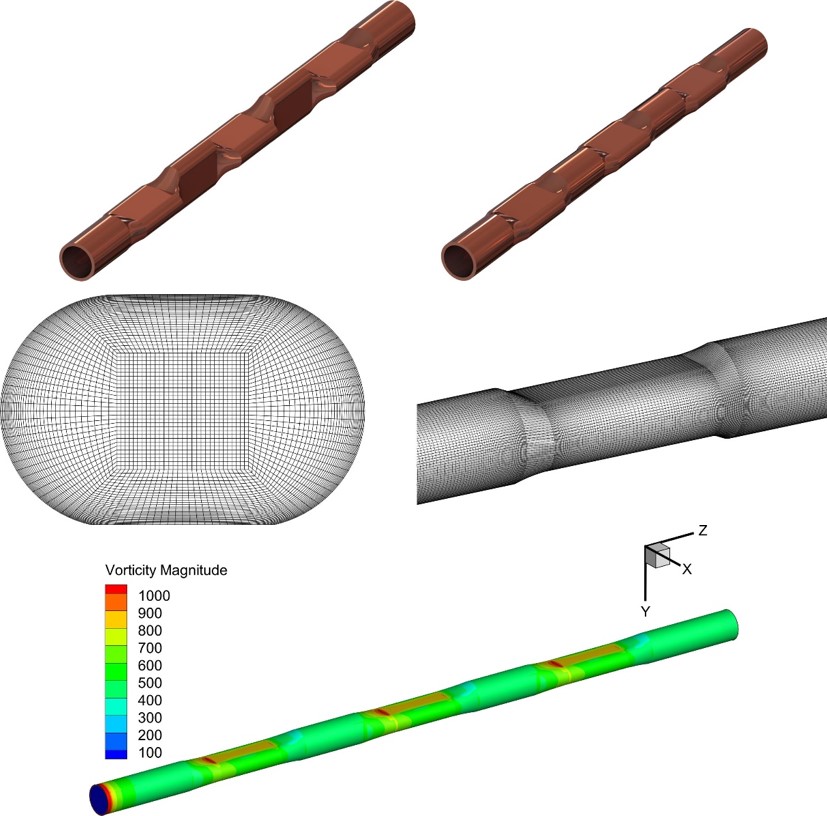Research Focus
My current research focuses on experimentally studying mixing and turbulence of dilute polymer solutions. Jets of dilute polymer solutions can reduce turbulent drag if injected around the body of marine vehicles in marine transport applications. This drag reduction results in up to 25% decrease in frictional energy losses and thus can help alleviate global warming by reducing fuel consumption and carbon emission. To study the poorly-understood physics of this phenomenon, we investigate the change in the flow structure due to the presence of dissolved polymers in a submerged jet as it enters a quiescent water tank. Probing the structure of these jet flows is optically challenging, as the dilute polymer solution and water have very similar densities and shear viscosities making their differentiation impossible with the naked eye. The small density difference, however, provides sufficient refractive index contrast for visualization using high-speed digital Schlieren imaging. This visualization method uniquely identifies the evolution of Lagrangian flow structures and reveals the effects the polymer additives have on introducing new flow instability mechanisms or mitigating the eddies induced by turbulent fluctuations.

As a side project, I have studied the interfacial turbulence a water drop at an oil/alcohol interface. Water and ethanol are fully miscible, while anise oil and ethanol are partially miscible and anise oil and water are immiscible. Mixing of all three liquids; however, result in an equilibrium state emulsion of anise microdroplets in water/ethanol solution. I have studied the mixing of a water drop at the interface of anise oil and ethanol until the equilibrium emulsion state is achieved and used a combination of regular imaging and Schlieren imaging to visualize the mixing phenomenon. This mixing involves two processes: (i) introduction of a water drop at the anise oil/ethanol interface and formation of a vortex due to natural convection caused by exothermic mixing of water and ethanol, (ii) growth of the vortex at the interface due to change in surface tension and hence spreading coefficient as mixing happens. A scaling relation for the size of the vortex and surface tension at the inetrface is found. The vortex breaks up into smaller vortices and eventually reaches equilibrium as surface tension at the interface decreases.

Previous Research
As an undergraduate and master of applied science student I worked on three different projects: wind farm layout optimization, solar aeration system for aquaculture in developing world, and turbulent heat transfer enhancement in alternating flattened tubes.
Multi-objective energy-noise wind farm layout optimization under land use constarints
Recently the environmental impact of onshore wind farms is receiving major attention from both governments and wind farm designers. As land is more extensively exploited for wind farms, it is more likely for wind turbines to be in proximity with human dwellings, infrastructure, and natural habitats. This proximity makes significant portions of land unusable for the designers, introducing a set of land-use constraints. In this study, we perform a constrained multi-objective wind farm layout optimization considering energy and noise as objective functions, and considering land use constraints. A stochastic evolutionary algorithm (NSGA-II) solves the optimization problem, while the land-use constraints are handled with penalty functions and a novel hybrid constraint handling approach based on Constraint Programming. Results of this study illustrate the effect of constraint severity on the energy-noise trade-off. In addition, the potential of the new constraint handling approach to outperform existing constraint handling approaches is investigated.

• S. Yamani Douzi Sorkhabi, D. A. Romero, J. C. Beck, and C. H. Amon, Renewable Energy 126, 341 (2018).
• S. Yamani Douzi Sorkhabi, D. A. Romero, G. K. Yan, M. D. Gu, J. Moran, M. Morgenroth, and C. H. Amon, Renewable Energy 85, 359 (2016).
Long-Term Performance Estimation of Aquaculture Solar Aeration System for Developing World
Over the past several decades, the wild capture fisheries have become unsustainable and the practice of small-scale aquaculture has increased in the rural areas of developing countries. In aquaculture ponds, it is critical to maintain adequate levels of dissolved oxygen to ensure productivity and fish health. To provide adequate dissolved oxygen, aeration systems can be employed. However, the current aeration systems are expensive and require secure access to electricity, putting them out of reach for developing world applications. To address this need, a simple aeration system powered by solar energy, called a Solar Updraft Aerator (SUpA) is proposed. SUpA induces convection in the pond by directing absorbed solar energy to deeper pond layers, increasing the dissolved oxygen level. To be effective, SUpA needs to provide adequate dissolved oxygen even when there are multiple days of low sunlight. This research estimates the long-term performance of SUpA under different weather conditions and for a period of 15 to 18 years. Through this process, the dissolved oxygen level of the aquaculture pond is simulated with and without SUpA system to evaluate the magnitude of the influence. The results indicate that SUpA can significantly reduce the number of hours that the dissolved oxygen level is below the needed threshold.

• S. Yamani Douzi Sorkhabi, A. Mahmoud, S. Sur, E. Pavlov, and A. Bilton, Proceedings of ASME IDETC 2017 DETC2017, 68111 (2017).
Experimental and numerical study on heat transfer, flow resistance, and compactness of alternating flattened tubes
Recently, increasing heat transfer rate of heat exchangers and reducing their size without experiencing a significant increase in flow resistance has been the main focus of several studies. Through the course of these studies, a wide range of active and passive methods have been implemented. Among these methods, changing the geometry of the heat exchanger tubes has received an increasing attention due to its simplicity and cost-effectiveness. In this study, a new geometry called the alternating flattened tube is introduced and its performance against other widely used tubes is evaluated. To compare the heat transfer, pressure drop, and compactness of the tubes simultaneously, a parameter called tube performance enhancement ratio is introduced. Both experimental and numerical results show that the alternating flattened tube has a better performance enhancement ratio compared to the previously studied tubes and can be an advantageous alternative for the conventional circular tubes.

• A. R. Sajadi, F. Kowsary, M. A. Bijarchi, and S. Yamani Douzi Sorkhabi, Applied Thermal Engineering 108, 740 (2016).
• A. R. Sajadi, S. Yamani Douzi Sorkhabi, D. Ashtiani, and F. Kowsary, International Journal of Heat and Mass Transfer 77, 124 (2014).